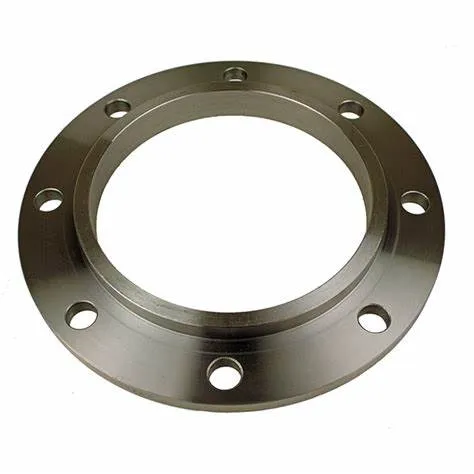-
Cangzhou Yulong Steel Co., Ltd.
-
Phone:
+86 13303177267 -
Email:
admin@ylsteelfittings.com
- English
- Arabic
- Italian
- Spanish
- Portuguese
- German
- kazakh
- Persian
- Greek
- French
- Russian
- Polish
- Thai
- Indonesian
- Vietnamese
- Zulu
- Korean
- Uzbek
- Hindi
- Serbian
- Malay
- Ukrainian
- Gujarati
- Haitian Creole
- hausa
- hawaiian
- Hebrew
- Miao
- Hungarian
- Icelandic
- igbo
- irish
- Japanese
- Javanese
- Kannada
- Khmer
- Rwandese
- Afrikaans
- Albanian
- Amharic
- Armenian
- Azerbaijani
- Basque
- Belarusian
- Bengali
- Bosnian
- Bulgarian
- Catalan
- Cebuano
- China
- China (Taiwan)
- Corsican
- Croatian
- Czech
- Danish
- Esperanto
- Estonian
- Finnish
- Frisian
- Galician
- Georgian
- Kurdish
- Kyrgyz
- Lao
- Latin
- Latvian
- Lithuanian
- Luxembourgish
- Macedonian
- Malgashi
- Malayalam
- Maltese
- Maori
- Marathi
- Mongolian
- Myanmar
- Nepali
- Norwegian
- Norwegian
- Occitan
- Pashto
- Dutch
- Punjabi
- Romanian
- Samoan
- Scottish Gaelic
- Sesotho
- Shona
- Sindhi
- Sinhala
- Slovak
- Slovenian
- Somali
- Sundanese
- Swahili
- Swedish
- Tagalog
- Tajik
- Tamil
- Tatar
- Telugu
- Turkish
- Turkmen
- Urdu
- Uighur
- Welsh
- Bantu
- Yiddish
- Yoruba

Nov . 19, 2024 02:31 Back to list
Choosing the Right 4 Inch Blind Flange for Your Project Needs
Understanding 4 Inch Blind Flanges A Comprehensive Overview
In the world of piping systems, flanges play a crucial role in ensuring the safe and efficient connection of pipe segments, valves, pumps, and other equipment. Among various types of flanges, the blind flange is a unique and essential component, particularly when it comes to maintenance and construction tasks. This article will provide an in-depth look at the 4 inch blind flange, its applications, advantages, and considerations for use.
What is a Blind Flange?
A blind flange is a solid disc with bolt holes that serves to close off the ends of piping systems. Unlike other flanges, which connect different piping components, blind flanges are designed to seal off a pipe, preventing the flow of liquids and gases. This makes them valuable in various applications across industries, including oil and gas, water treatment, chemical processing, and many others.
Specifications of a 4 Inch Blind Flange
The 4 inch designation refers to the nominal pipe size (NPS) that the flange is designed to fit. Specifically, a 4 inch blind flange corresponds to a pipe with a 4 inch diameter. These flanges are typically produced according to several standard specifications, including ANSI/ASME B16.5 (Steel Pipe Flanges and Flanged Fittings), which outlines dimensions, tolerances, and ratings for flanges.
A standard 4 inch blind flange comes in various pressure ratings, such as ANSI 150, ANSI 300, and ANSI 600, which indicate the amount of pressure the flange can withstand. It is vital to select the appropriate pressure rating based on the application to avoid failures that could lead to leaks or hazardous situations.
Materials and Manufacturing
4 inch blind flanges can be made from a variety of materials, depending on the requirements of the specific application
. Common materials include- Carbon Steel Offers high strength and versatility, making it suitable for a wide range of applications. - Stainless Steel Provides excellent corrosion resistance and is often used in industries where hygiene is paramount, such as food processing and pharmaceuticals. - Alloy Steel Typically used in high-temperature and high-pressure applications, offering superior durability.
Manufacturing processes for blind flanges may involve forging, casting, or machining, depending on the material and desired properties. Quality control measures, such as non-destructive testing, are often implemented to ensure that the flanges meet industry standards.
4 inch blind flange

Applications of 4 Inch Blind Flanges
The 4 inch blind flange can be found across various applications, including
1. Pipeline Maintenance Blind flanges allow for easy isolation of pipeline segments, facilitating maintenance without shutting down the entire system. 2. Equipment Testing Before commissioning new pipelines or equipment, blind flanges can be used to seal off sections for testing purposes. 3. System Modifications When modifications or expansions are made to existing piping systems, blind flanges help close off unused lines. 4. Heat Exchangers In heat exchangers, blind flanges can seal off connections that are temporarily unused.
Advantages of Using Blind Flanges
1. Ease of Maintenance By allowing sections of pipe to be closed off, blind flanges simplify maintenance and repair work. 2. Cost-Effectiveness Blind flanges are generally less expensive than other types of flanges and can reduce installation costs by minimizing the need for additional piping. 3. Versatility They can be used in a wide variety of applications, from commercial plumbing to industrial processing systems.
Considerations Before Use
While blind flanges are incredibly useful, there are some considerations to keep in mind
- Pressure and Temperature Ratings Always ensure that the selected 4 inch blind flange meets the pressure and temperature requirements of your application. - Proper Sealing It is crucial to use appropriate gaskets and bolts to ensure a proper seal and prevent leaks. - Installation Standards Follow industry standards and best practices during installation to ensure the longevity and reliability of the flange.
Conclusion
The 4 inch blind flange is a fundamental component in numerous piping systems. Understanding its specifications, applications, and advantages can help engineers, maintenance personnel, and project managers make informed decisions regarding their use. By selecting the right materials and adhering to installation best practices, blind flanges can provide reliable service, enhancing the efficiency and safety of industrial operations.
Latest news
-
ANSI 150P SS304 SO FLANGE
NewsFeb.14,2025
-
ASTM A333GR6 STEEL PIPE
NewsJan.20,2025
-
ANSI B16.5 WELDING NECK FLANGE
NewsJan.15,2026
-
ANSI B16.5 SLIP-ON FLANGE
NewsApr.19,2024
-
SABS 1123 FLANGE
NewsJan.15,2025
-
DIN86044 PLATE FLANGE
NewsApr.19,2024
-
DIN2527 BLIND FLANGE
NewsApr.12,2024
-
JIS B2311 Butt-Welding Fittings LR/SR 45°/90° /180°Seamless/Weld
NewsApr.23,2024











